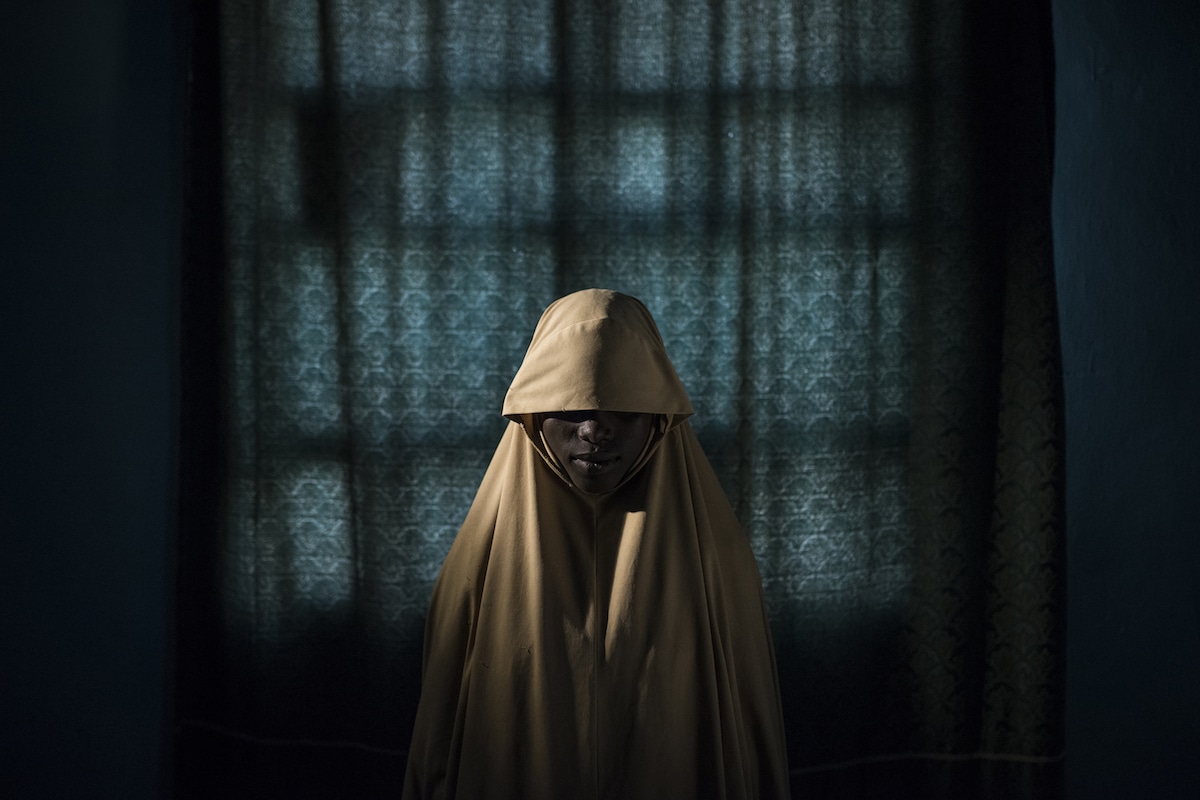
‘Boko Haram Strapped Suicide Bombs to Them. Somehow These Teenage Girls Survived. – Aisha, age 14.’ by Adam Ferguson, for The New York Times. World Press Photo of the Year Nominee. Aisha (14) stands for a portrait in Maiduguri, Borno State, Nigeria. After being kidnapped by Boko Haram, Aisha was assigned a suicide bombing mission, but managed to escape and find help instead of detonating the bombs.
Since 1955, World Press Photo has celebrated the best of international photojournalism with its annual photography contest. Always gripping, sometimes heartwarming, and often difficult to see, the images of these top photojournalists tell the story of our collective history with unflinching realism. Last year’s World Press Photo of the Year was a heart-wrenching image taken during the assassination of the Russian ambassador to Turkey.
The recently announced nominees of the 2018 World Press Photo Contest have produced equally powerful imagery that demonstrates just how vital photojournalists still are to our understanding of world news. “The best visual journalism is not of something; it is about something. It should matter to the people to whom it speaks,” states Lars Boering, managing director of the World Press Photo Foundation.
For the 61st edition of the photo contest, not only were category nominees announced, but for the first time, the six nominees for the World Press Photo of the Year were revealed. Forty-four photographers from over 20 countries were nominated for work in eight different categories, including a new environment section. Both single images and visual stories are taken into consideration, and over 300 photographs from the 73,044 submitted were nominated for prizes to be announced on April 12 in Amsterdam.
The international refugee crisis was a dominant theme for the 2018 photojournalism contest, while long-form storytelling included the documentation of white supremacy in the United States and China’s growing food industry to the story of two sisters growing up in rural Austria. While the photographs can, at times, recall painful events from recent history, they are a reminder of the dedication and professionalism that these photojournalists demonstrate in their quest to bring news to the public.
For the first time in the contest’s history, the nominees for World Press Photo of the Year were revealed to the public.

‘The Battle for Mosul – Lined Up for an Aid Distribution’ by Ivor Prickett, for The New York Times. Civilians who had remained in west Mosul after the battle to take the city line up for aid in the Mamun neighborhood.
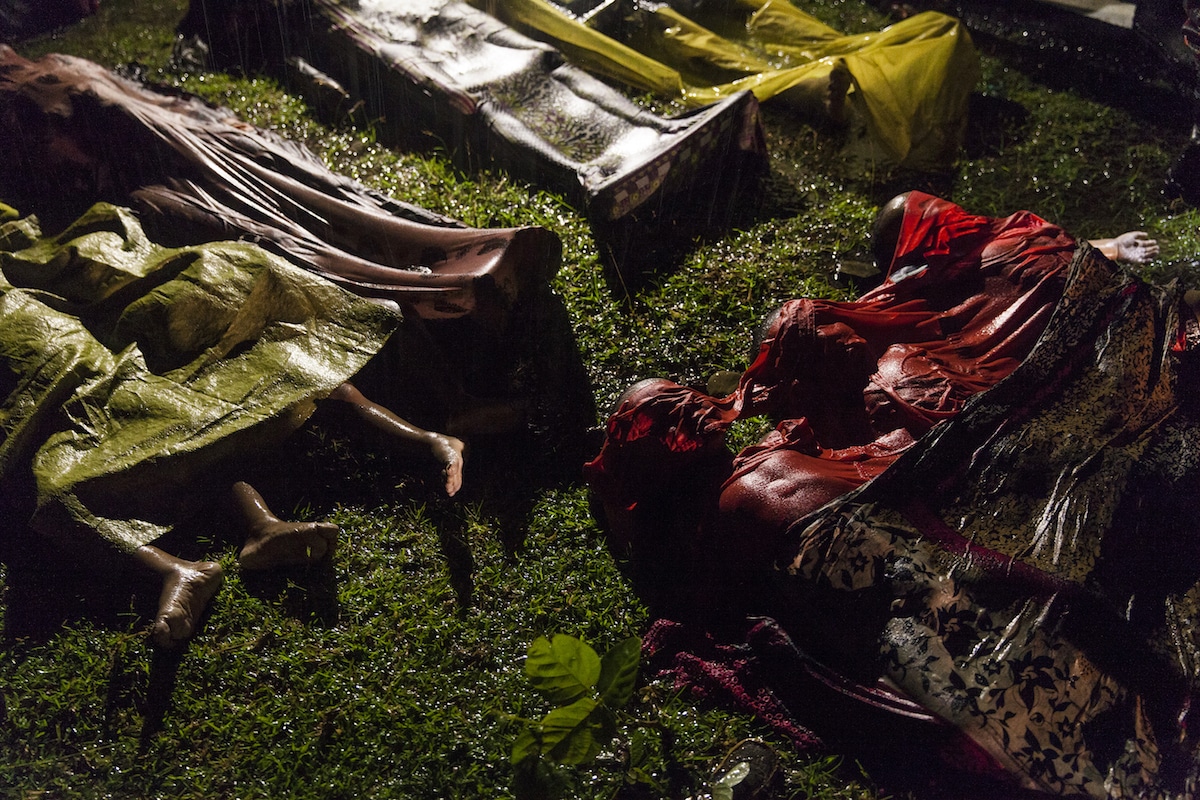
‘Rohingya Crisis’ by Patrick Brown, Panos Pictures, for Unicef. The bodies of Rohingya refugees are laid out after the boat in which they were attempting to flee Myanmar capsized about eight kilometers off Inani Beach, near Cox’s Bazar, Bangladesh. Around 100 people were on the boat before it capsized. There were 17 survivors.
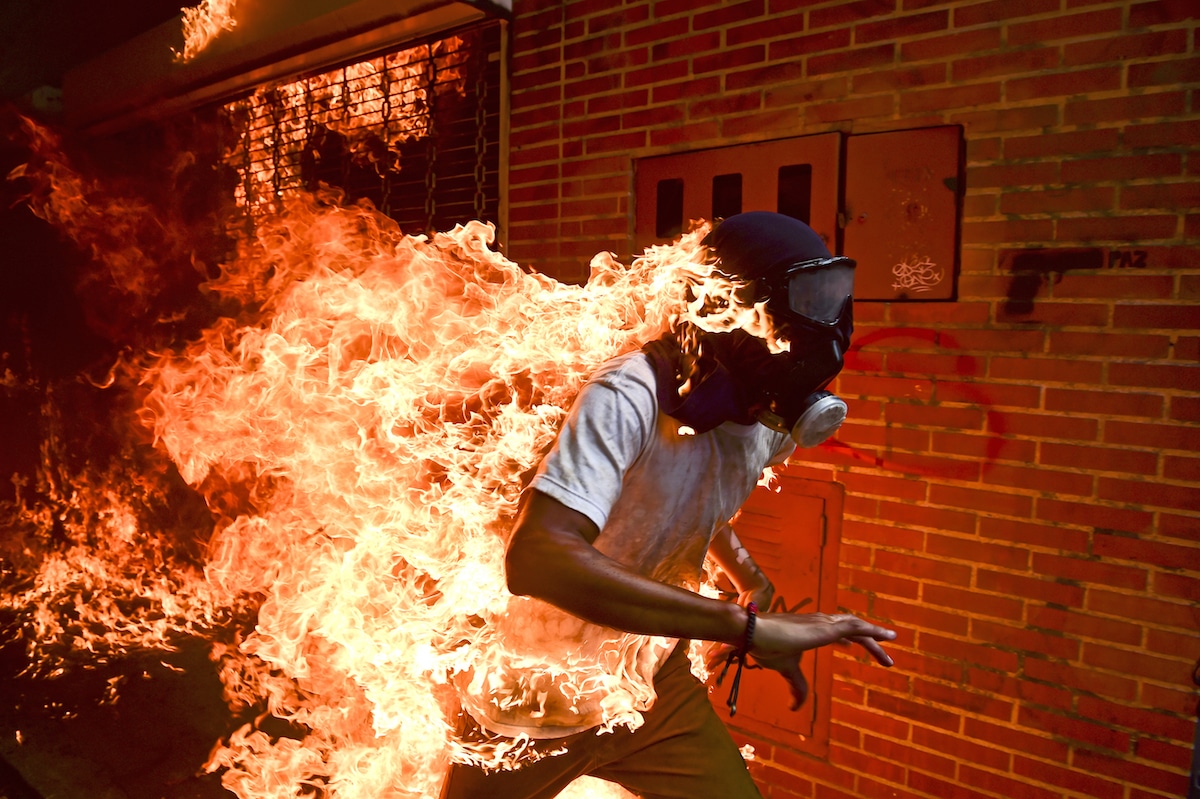
‘Venezuela Crisis’ by Ronaldo Schemidt, Agence France-Presse. José Víctor Salazar Balza (28) catches fire amid violent clashes with riot police during a protest against President Nicolas Maduro, in Caracas, Venezuela.
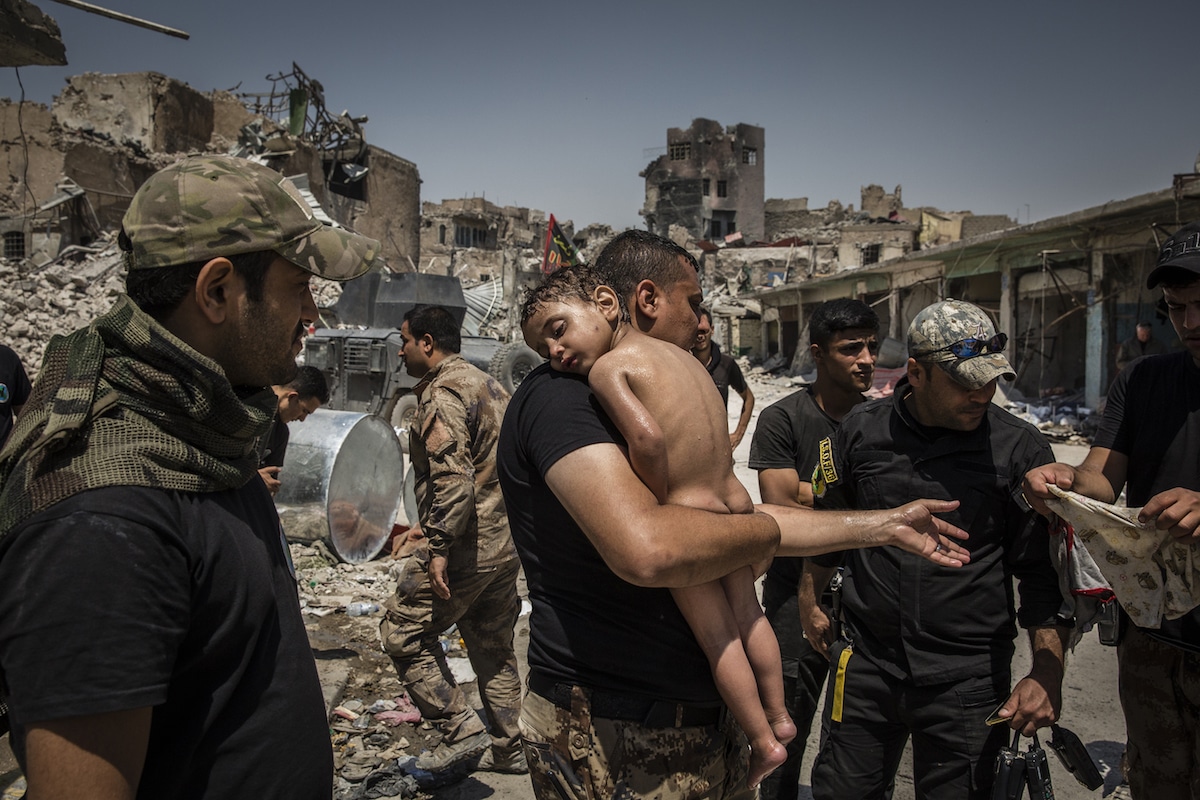
‘The Battle for Mosul – Young Boy Is Cared for by Iraqi Special Forces Soldier’ by Ivor Prickett, for The New York Times. An unidentified young boy, who was carried out of the last ISIS-controlled area in the Old City by a man suspected of being a militant, is cared for by Iraqi Special Forces soldiers.

‘Witnessing the Immediate Aftermath of an Attack in the Heart of London’ by Toby Melville, Reuters. A passerby comforts an injured woman after Khalid Masood drove his car into pedestrians on Westminster Bridge in London, UK, killing five and injuring multiple others.
Here is a small selection of the 312 photographs nominated for photojournalism’s top prize.

‘Not My Verdict’ by Richard Tsong-Taatarii, Star Tribune. Nominee, General news singles. John Thompson is embraced in St Anthony Village, Minnesota, USA, after speaking out at a memorial rally for his close friend Philando Castile, two days after police officer Jeronimo Yanez was acquitted of all charges in the shooting of Castile.
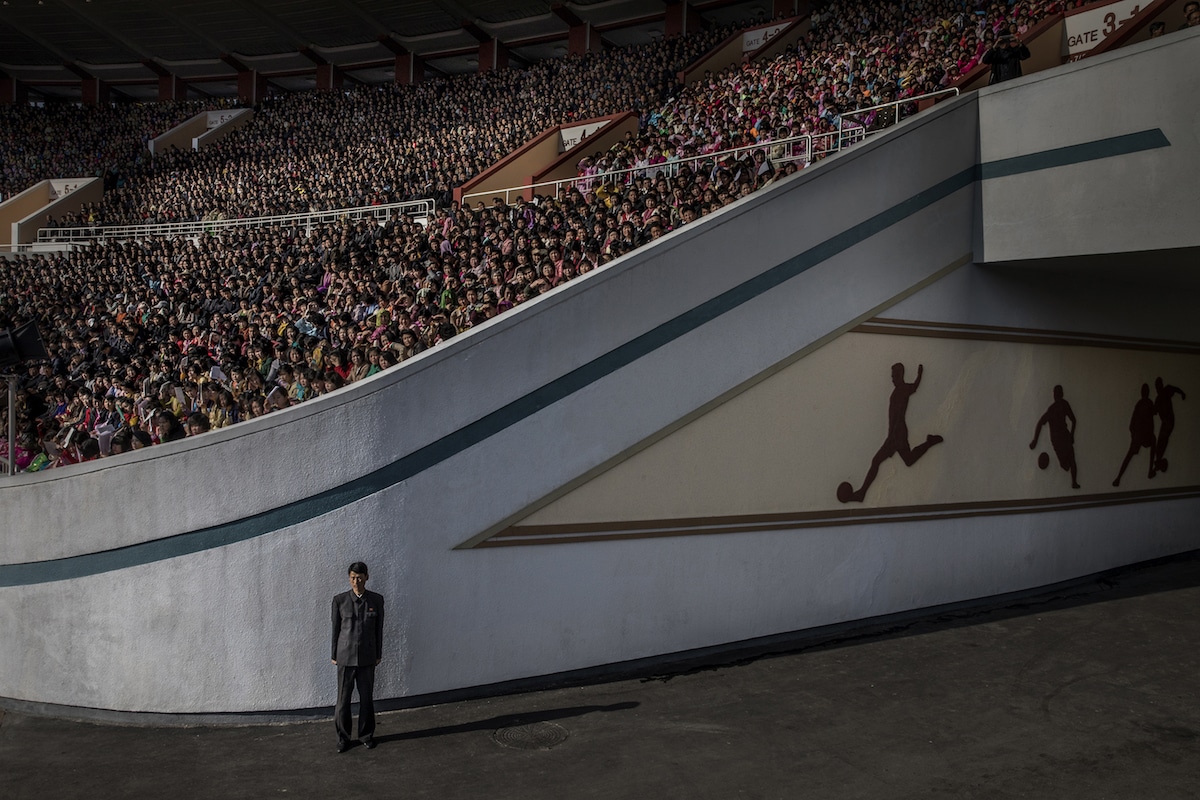
‘North Korea’ by Roger Turesson, Dagens Nyheter. Nominee, Contemporary Issues Singles. A crowd awaits the start of the Pyongyang Marathon at the Kim Il-sung Stadium, while an official guards the exit, in Pyongyang, North Korea.
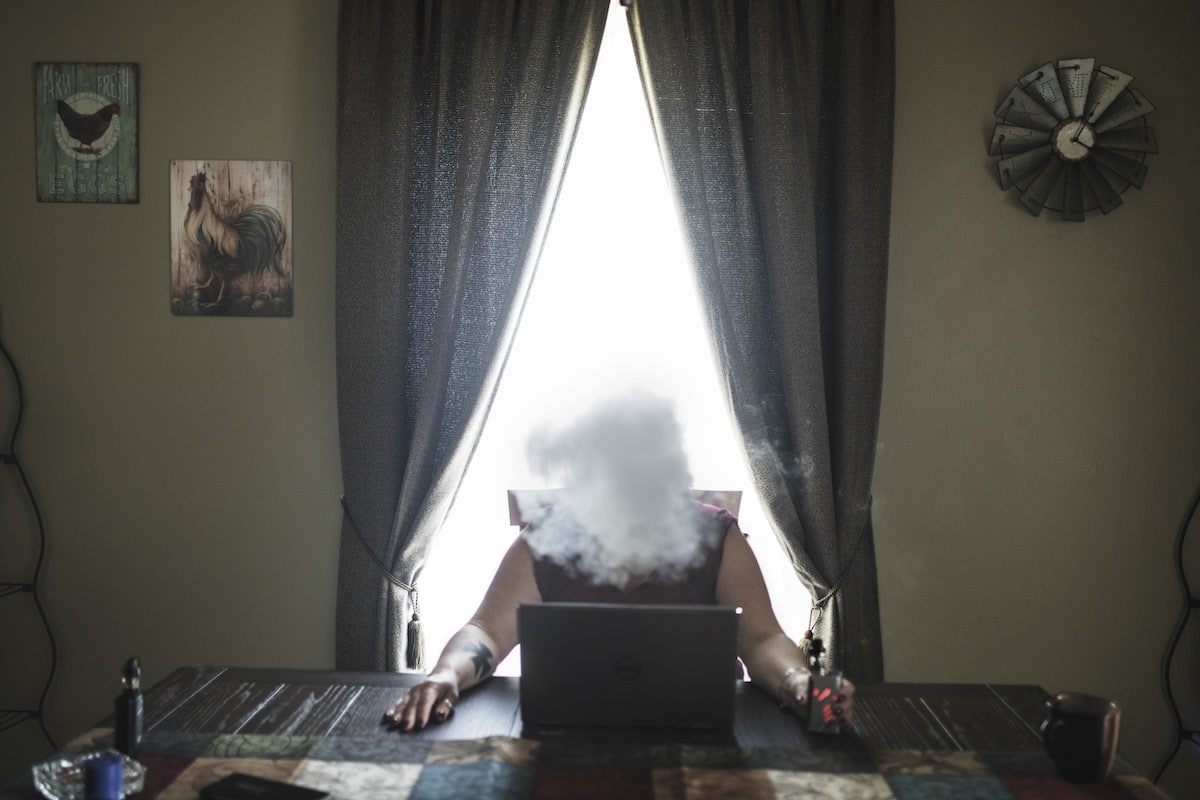
‘White Rage – USA’ by Espen Rasmussen, Panos Pictures, VG. Nominee, Contemporary Issues Stories. Degrees of anger in three US states: a journey made in the weeks after the Unite the Right rally in Charlottesville, Virginia. Lorri Cottrill, 45, smokes an e-cigarette in her home in Charleston, West Virginia. She is the leader of the biggest neo-nazi and right-wing organization in the US, National Socialist Movement.

‘Feeding China’ by George Steinmetz, for National Geographic. Nominee, Contemporary Issues Stories. Rapidly rising incomes in China have led to a changing diet and increasing demand for meat, dairy and processed foods. The food and agricultural industry is under pressure.
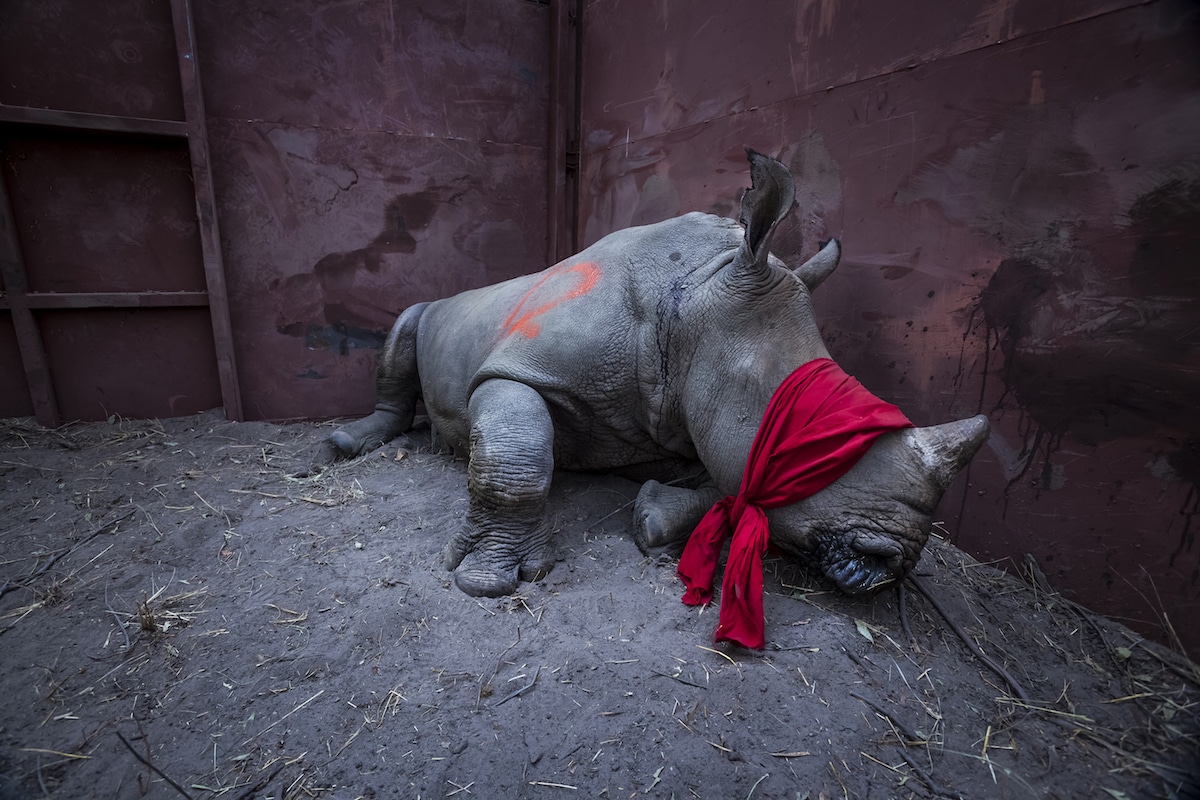
‘Waiting For Freedom’ by Neil Aldridge. Nominee, Environment Singles. A young white rhino, drugged and blindfolded, about to be released in Okavango Delta, Botswana, after its relocation from South Africa for protection from poachers.
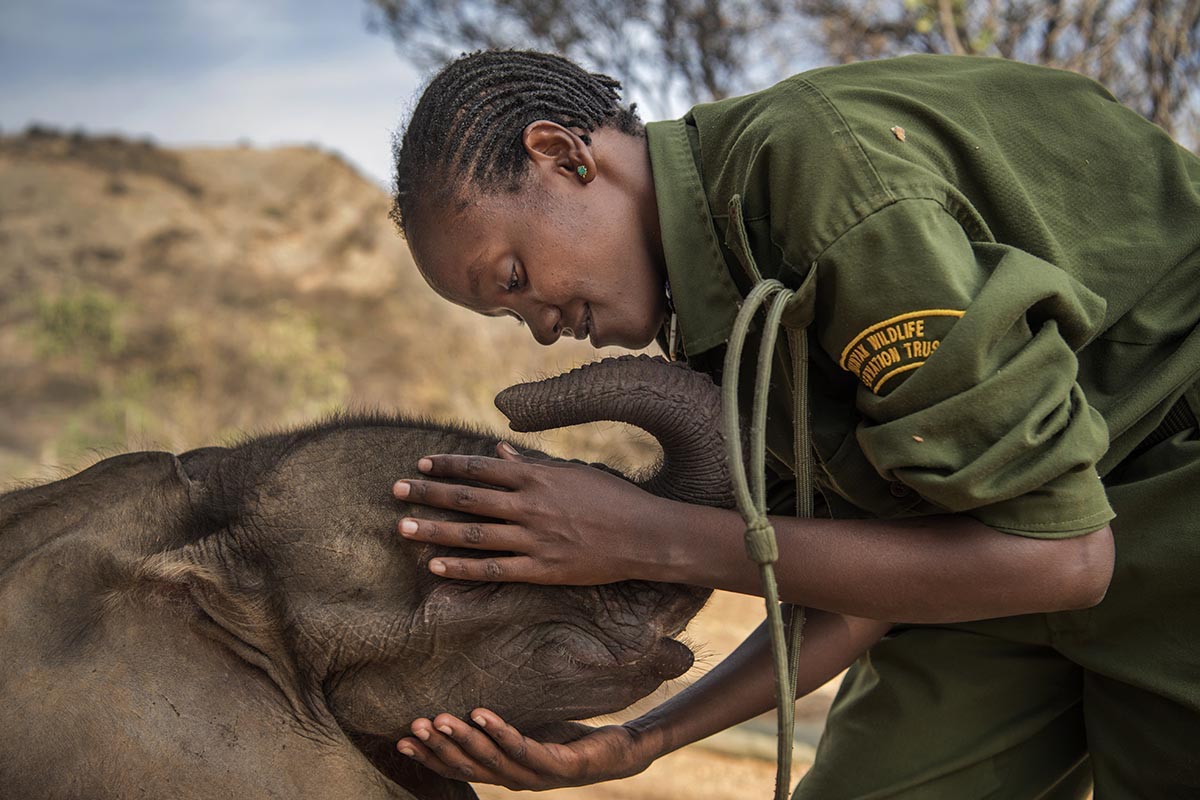
‘Warriors Who Once Feared Elephants Now Protect Them’ by Ami Vitale. Nominee, Nature stories. Orphaned and abandoned elephant calves are rehabilitated and returned to the wild, at the community-owned Reteti Elephant Sanctuary in northern Kenya.
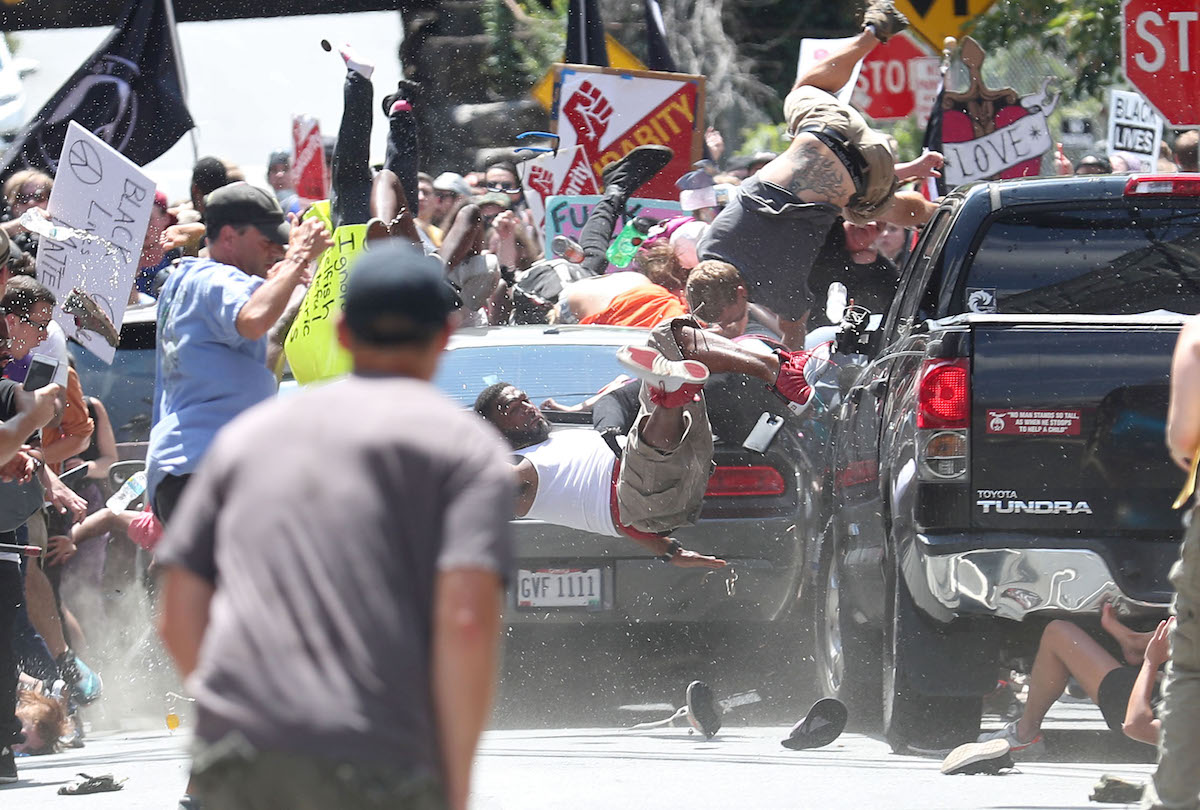
‘Car Attack’ by Ryan M. Kelly, The Daily Progress. Nominee, Spot news singles. People are thrown into the air as a car plows into a group of protesters demonstrating against the Unite the Right rally in Charlottesville in Virginia, USA.
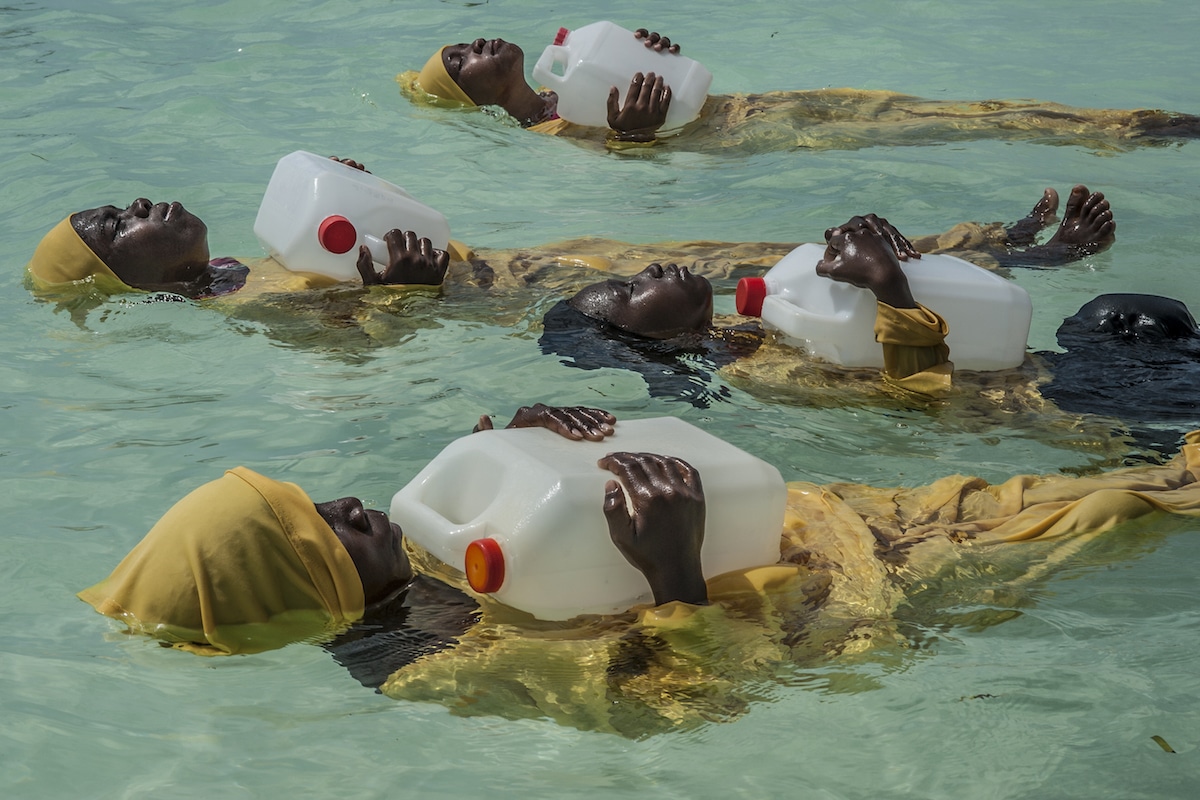
‘Finding Freedom in the Water’ by Anna Boyiazis. Nominee, People stories. Traditionally, girls in the Zanzibar archipelago are discouraged from learning how to swim. The Panje Project provides opportunities for local women and girls to learn swimming skills in full-length swimsuits, so that they can enter the water without compromising their cultural or religious beliefs.

‘Rohingya Refugees Flee Into Bangladesh to Escape Ethnic Cleansing’ by Kevin Frayer, Getty Images. Nominee, General news stories. ‘Clearance operations’ against Rohingya Muslims in Myanmar conducted by the Burmese army led to hundreds of thousands of refugees fleeing into Bangladesh on foot or by boat. Many died in the attempt. In Bangladesh, refugees were housed in makeshift settlements.
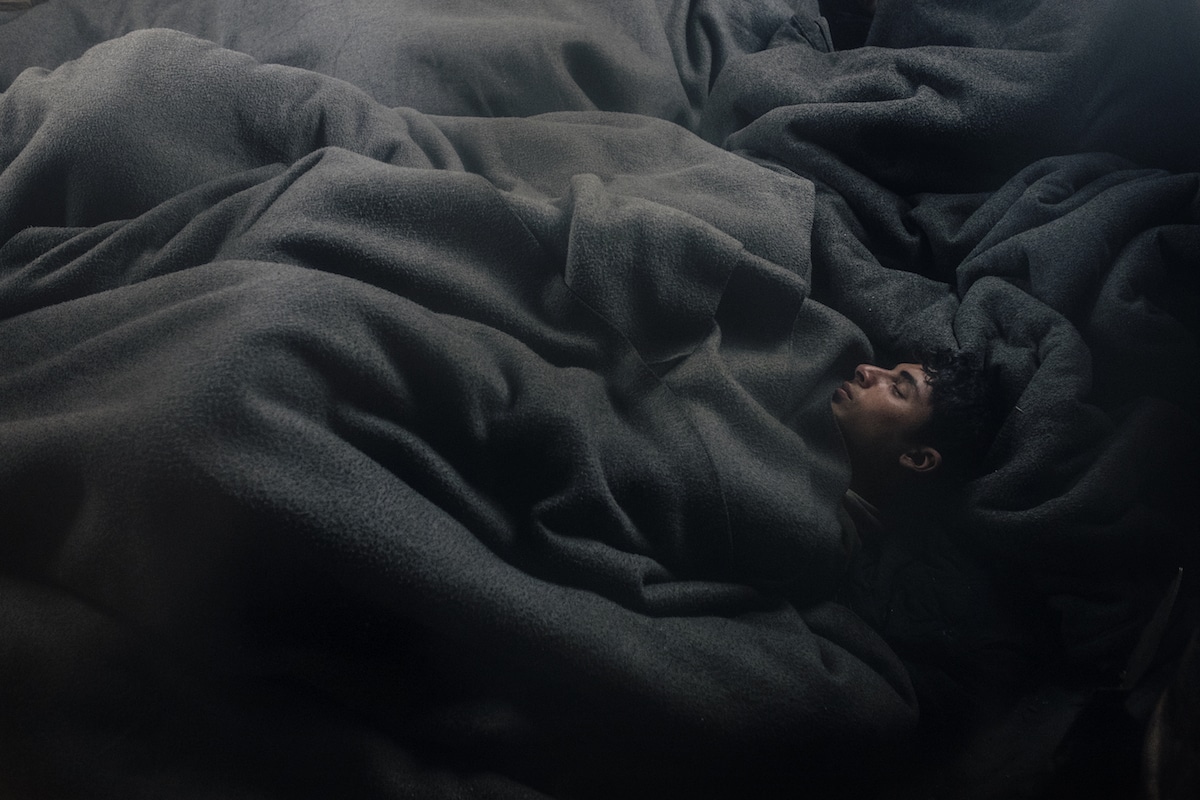
‘Lives in Limbo’ by Francesco Pistilli. Nominee, General news stories. The tightening of the so-called Balkan route into the European Union stranded thousands of refugees attempting to travel through the country to seek a new life in Europe. Many spent the freezing Serbian winter in derelict warehouses behind Belgrade’s main train station.
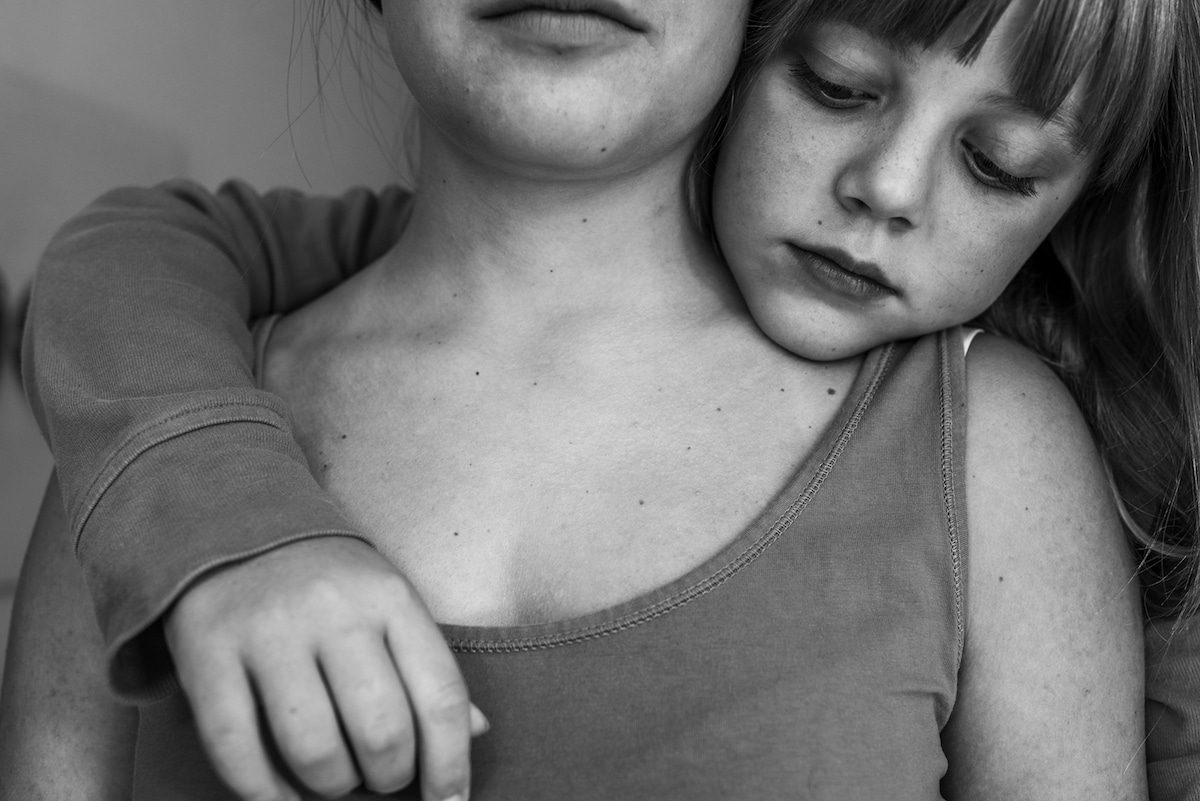
‘Ich Bin Waldviertel’ by Carla Kogelman. Nominee, Long-Term Projects. Hannah and Alena are two sisters living in the small village of Merkenbrechts in the Waldviertel, an isolated rural area in Austria between Vienna and the Czech Republic. The story documents summer days around Austria as the girls grow up over the years.
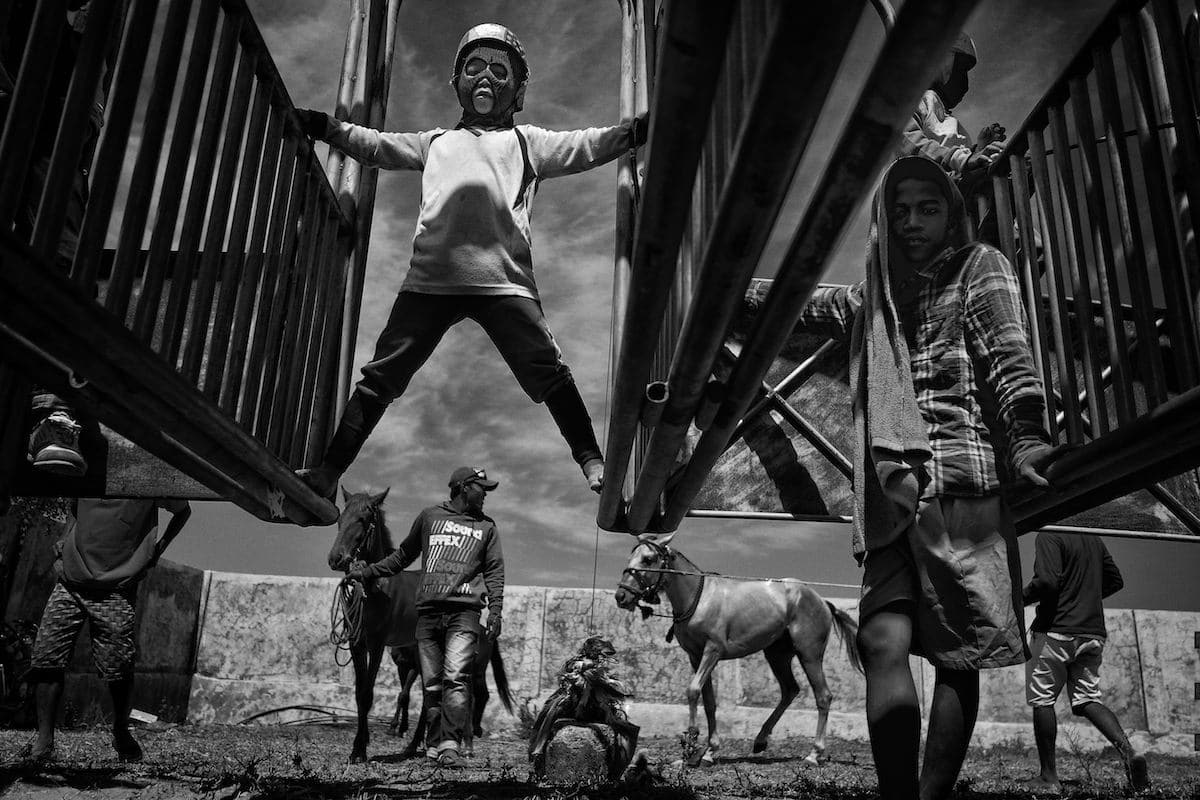
‘Kid Jockeys’ by Alain Schroeder, Reporters. Nominee, Sports stories. Child jockeys (aged 5-10) ride bareback, barefoot and with little protective gear, on small horses, during traditional Maen Jaran horse races, on Sumbawa Island, Indonesia.
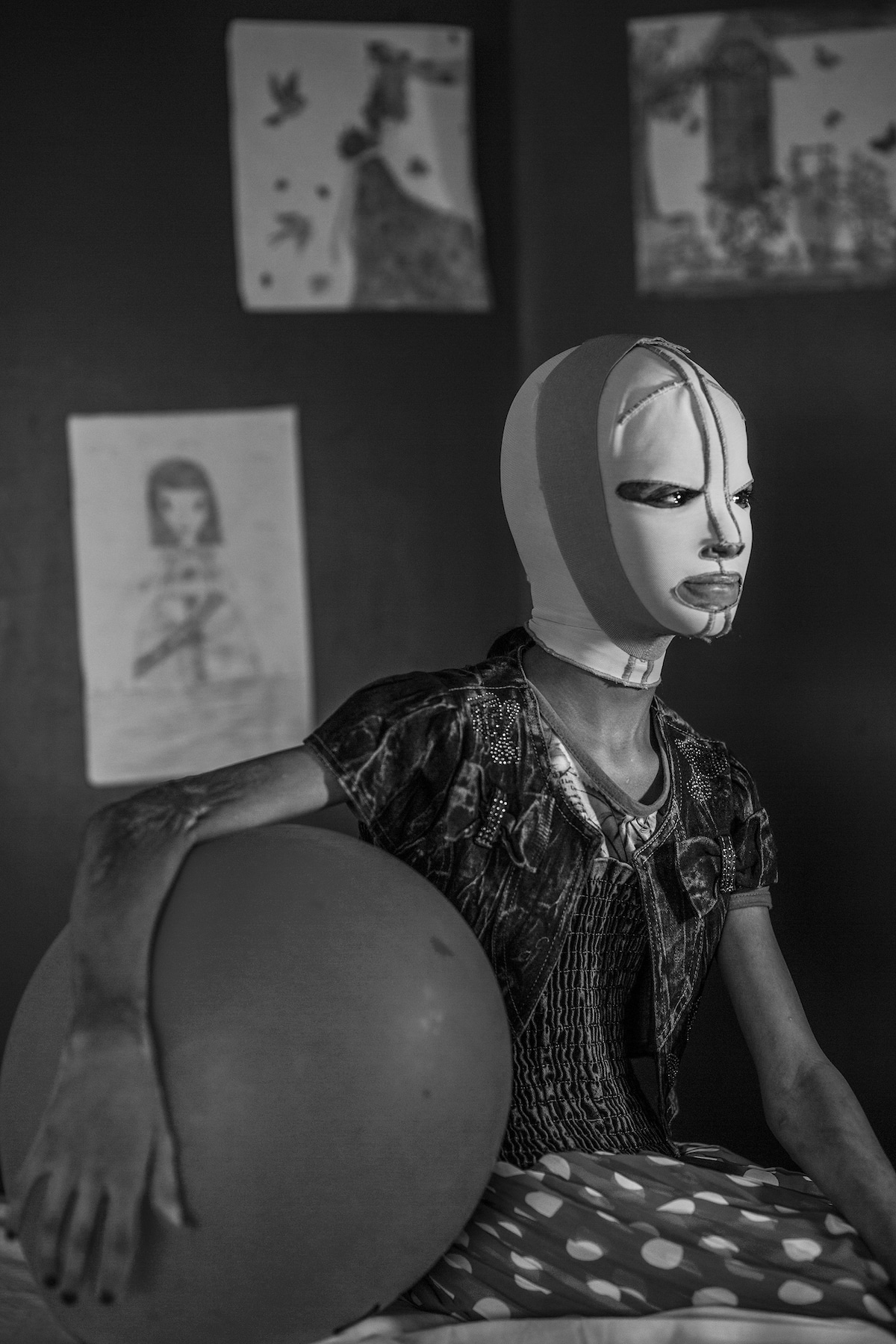
‘Manal, War Portraits’ by Alessio Mamo, Redux Pictures. Nominee, People singles. Manal (11), a victim of a missile explosion in Kirkuk, Iraq, wears a mask for several hours a day to protect her face, following extensive plastic surgery, at Al-Mowasah Hospital, Amman, Jordan.
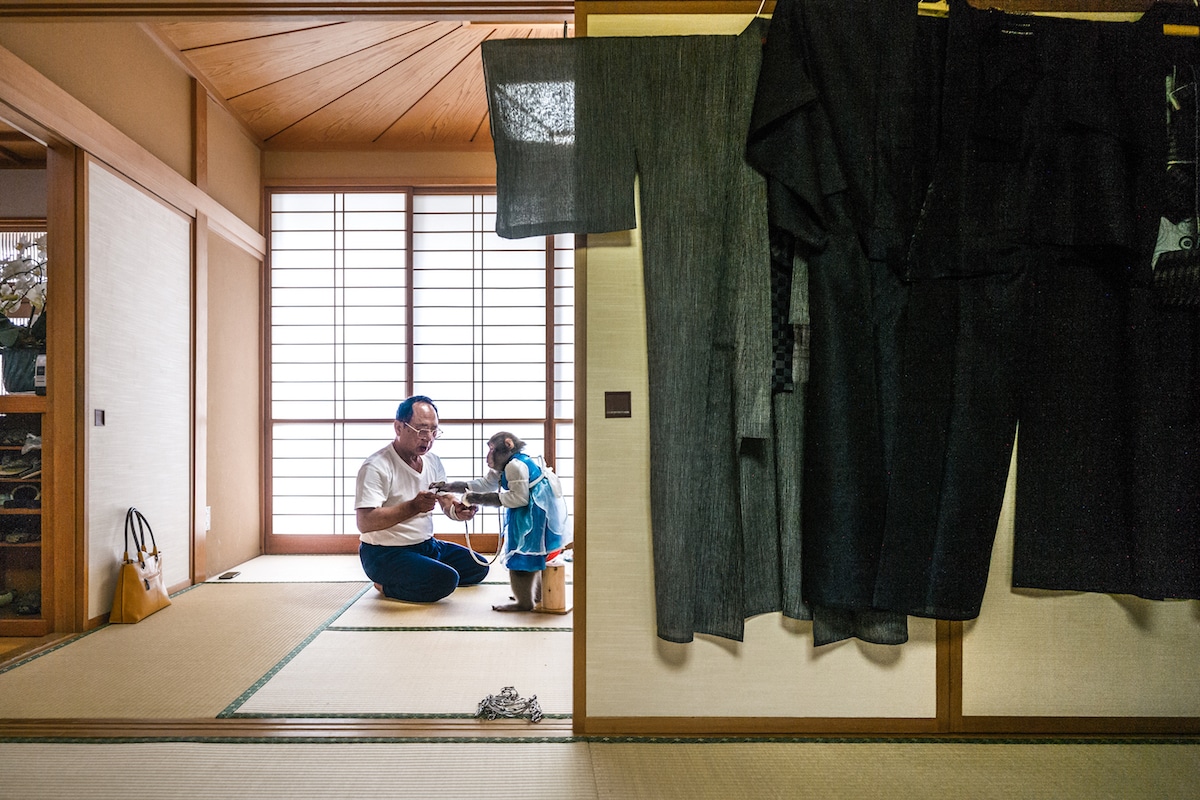
‘Sacred No More’ by Jasper Doest. Nominee, Nature Stories. In recent years, the Japanese macaque, best known as the snow monkey, has become habituated to humans. An increasing macaque population in the countryside means the monkeys raid crops to survive; in cities, macaques are tamed and trained for the entertainment industry.
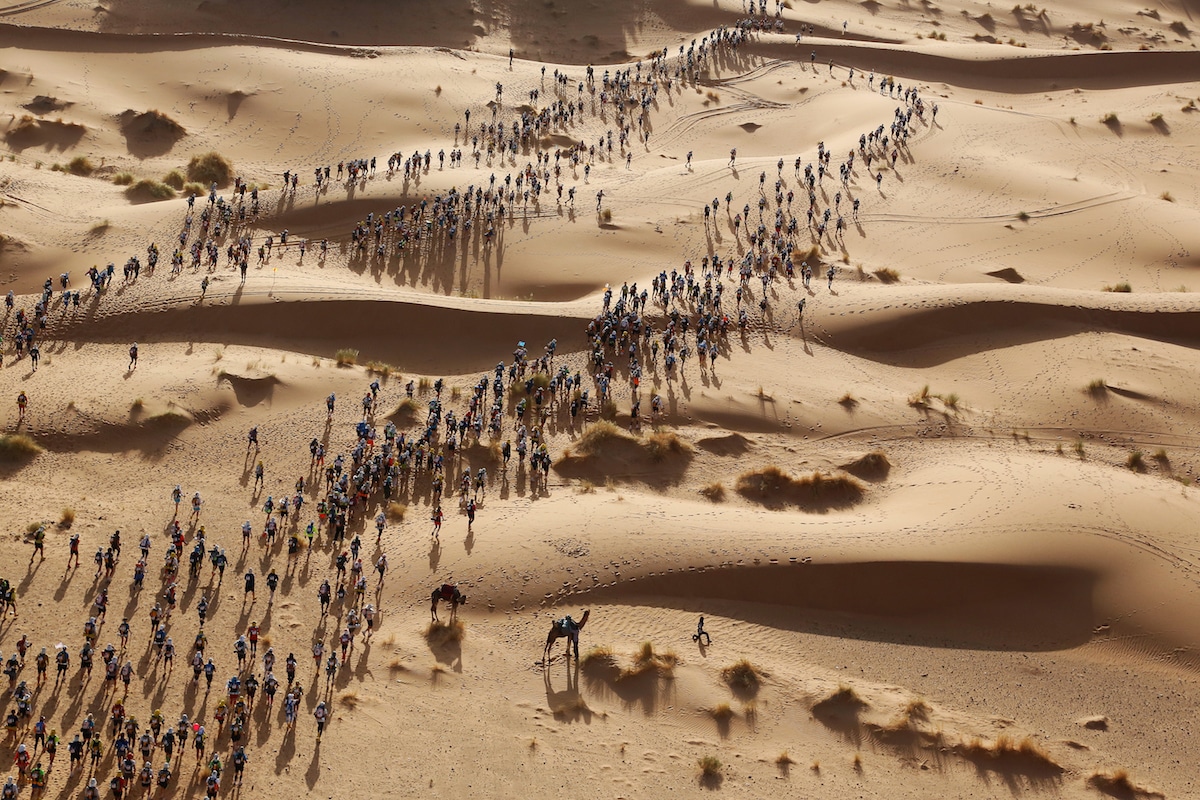
‘Marathon des Sables’ by Erik Sampers. Nominee, Sports singles. Runners in the Marathon de Sables (The Marathon of Sands), Sahara Desert, Morocco, which began on 9 April.
